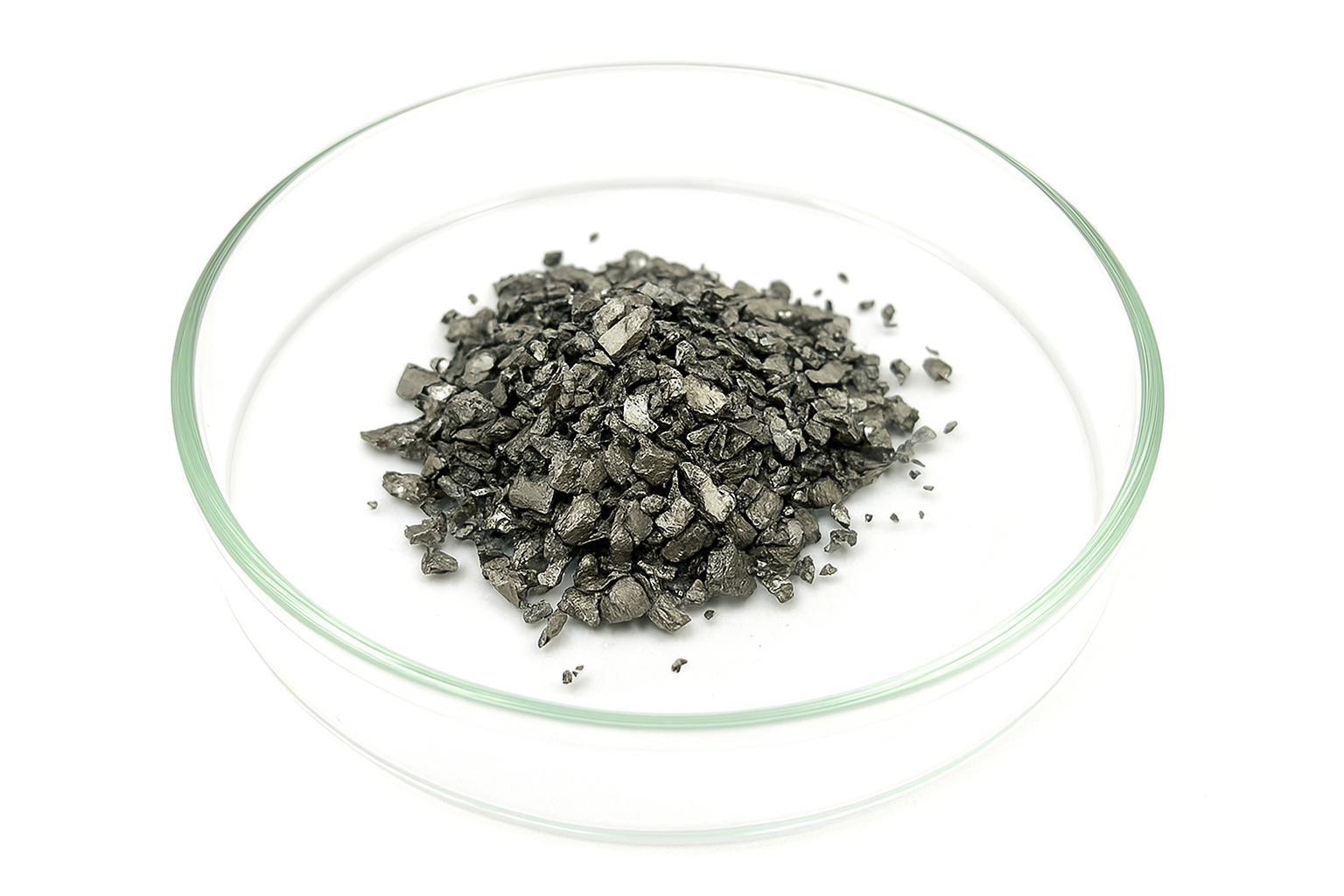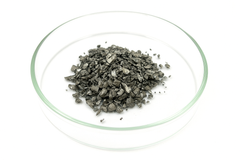Cell Lab 3N (99.9%) Boron (B) Pieces Evaporation Materials
High-Purity Boron for Thin-Film Coatings, Semiconductor Doping, and Advanced Materials
General Description
Cell Lab 3N (99.9%) Boron (B) Pieces are high-purity evaporation materials used in thin-film deposition, semiconductor doping, and advanced material synthesis.
Boron is a brittle, dark, lustrous metalloid with a high melting point and exceptional thermal resistance. In vacuum evaporation, boron produces thin films with excellent hardness, chemical inertness, and infrared transparency, making it essential in optical coatings, semiconductor layers, and high-temperature ceramics.
Additionally, boron serves as a dopant in silicon semiconductors, a reinforcing additive in fiberglass and polymers, and a structural enhancer in ceramics due to its stability and low density.
Key Features
-
High Purity (99.9%) – Ensures low contamination for precision thin-film and semiconductor applications.
-
Excellent Heat Resistance – Withstands extreme deposition temperatures up to 2,079 °C.
-
Versatile Metalloid Behaviour – Balances metallic and non-metallic characteristics, suitable for multiple industries.
-
Stable Evaporation Performance – Compatible with carbon boats and crucibles under high-vacuum conditions.
-
Multi-Industry Application – Used in optical coatings, semiconductors, ceramics, and composites.
Technical Specifications
| Parameter | Specification |
|---|---|
| Material | Boron |
| Symbol | B |
| Purity | 99.9% (3N) |
| Atomic Weight | 10.811 g/mol |
| Atomic Number | 5 |
| Colour / Appearance | Black, Semi-metallic |
| Melting Point | 2,079 °C |
| Thermal Conductivity | 27 W/m·K |
| Coefficient of Thermal Expansion | 6 × 10⁻⁶ /K |
| Theoretical Density | 2.34 g/cm³ |
| Z Ratio | 0.389 |
| Thermal Evaporation Techniques | Boat: C; Crucible: C |
| E-Beam Crucible Liner Material | Graphite |
Applications & Industries
-
Thin-Film Coatings – Produces high-hardness, thermally stable films for optical and electronic applications.
-
Semiconductor Doping – Used as a p-type dopant in silicon-based electronics.
-
Advanced Ceramics & Composites – Enhances strength, insulation, and wear resistance in engineered materials.
-
Fibreglass & Polymers – Serves as a reinforcing additive for heat-resistant composites.
-
Chemical Synthesis – Acts as a reagent intermediate in organic and inorganic synthesis.
FAQ
Q1: What crucible material is recommended for boron evaporation?
Graphite or carbon crucibles are ideal due to their compatibility with boron’s high-temperature behaviour.
Q2: Can boron be used for semiconductor applications?
Yes. High-purity boron is widely used as a p-type dopant in silicon wafers for transistor and diode production.
Q3: What makes boron films desirable in thin-film coatings?
Boron films are valued for their high hardness, optical clarity, and resistance to thermal shock.
Q4: Is boron suitable for optical coatings?
Yes. It is used for infrared and high-temperature optical coatings due to its refractive stability.



